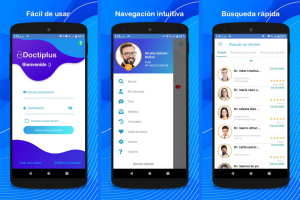It can be agreed that today the aspect of technology has infiltrated all sectors of society including that of healthcare. Indeed, it is telemedicine that is located at the epicenter of this change, impacting on such fundamental aspects as interaction, access, and management of health.
Telemedicine looks at the magnificent journey that has led the medical services to become more advanced and extensive and how telemedicine has played a central part in this change.
While the conventional healthcare systems are struggling to deal with such issues as long hours of waiting, scarcity of resources, and differences in patient needs, there is a solution that is already here: telemedicine.
This article examines the particularities of how telemedicine works; what advantages it has in comparison to the traditional methods; and what obstacles it currently encounters, thus presenting a general picture of the modern healthcare system that is globalized, accessible, and focused on patients.
What is Telemedicine?
Telemedicine is in fact the provision of M-health or medical care from a distance by employing telecommunications technology. Some of these are video consultation, remote patient monitoring and mobile health which can enable the patient to virtually access providers’ services without physically visiting clinic or hospital. This means that telemedicine is a very useful service that ranges from a primary care service, mental health service, specialist services and chronic disease services.
A View: Telemedicine History
Even though today, it is trending and buzzing word in healthcare; it is a very old practice which is dated back in 19th of the century. The creation of it is all started with the inception of telecommunications infrastructure, which includes telegraph, telephone, and radio. Today, it has incredibly developed, and, people now a day’s using telemedicine as like mobiles and laptops.
In this busy urban world, it is benefiting in easily connecting with doctors and even in rural areas, it has helped by improving the accessibility by connecting doctors. Scientists have predicted that the telemedicine as an industry is going to be a freaking 35 billion USD. Even though this industry has come so far from where it started, but still have a long way to go.
Types of Telemedicine
- Remote Patient Monitoring
- Interactive Medicine
- Store and Forward
The Benefits of Telemedicine
- Increased Accessibility: The best-known benefit is that it can improve access to care in areas that lack adequate numbers of healthcare providers. Others are patients for whom geography used to be a constraint because of the long distances that they had to cover, lack of transport or no doctors within the vicinity or even states can now receive good healthcare when they had otherwise not been able to.
- Convenience and Flexibility: It also makes it possible for patients to select the time they want to meet the doctor; hence one may not have to wait for a long time from the time they make a call to the time they get the doctor’s attention. This is especially advantageous for working people, or those on other responsibilities like care giving, or walking challenges.
- Cost-Effectiveness: This means that through utilization of telemedicine there will be a reduction in the frequency of the patient’s visits to the doctors’ doors hence bringing an end to the extremely high cost of patient healthcare. It decreases transport costs, decreases overheads by demand for structures and can enhance the efficiency of certain activities aimed at delivering care.
- Enhanced Patient Engagement: It makes patients become very proactive when it comes to their health. This means that the patient is informed and active in his or her treatment regime due to internet access to providers’ communication and records.
- Continuity of Care: It is applied for patients with chronic diseases, allowing constant health supervision and treatment. Daily check-ups by the doctor through the web or phone can assist in the early detection of problem rises and make sure that patients are receiving the right doses of medications they require.
Challenges Facing Telemedicine
Despite the benefits that have been listed above, telemedicine has several drawbacks. Some key issues include:
- Regulatory Hurdles: Telemedicine license laws and regulations differ from one state or country to another making it challenging for healthcare providers to practice across state or country boundaries.
- Technology Disparities: It lacks a level playing field in terms of technology and internet connectivity hence discriminating against those patients that are unable to benefit from the health-related ICT services.
- Privacy and Security Concerns: The points that can be raised against the use of technology especially in the delivery of healthcare services include It is important to implement measures in order to comply with regulations which are mandatory like the HIPAA.
- Limited Scope of Services: There is extensive literature about the effectiveness of telemedicine as treatment of many chronic diseases but note that there are some conditions that might necessitate a physiochemical examination or intervention which only can be done in a clinical setting thereby limiting remote care.
Multiple Medical Specialties using Telemedicine
Telemedicine has benefited various medical specialties including the primary care arena. Following are some medical specialties:
- Radiology
- Mental Health
- Pediatric
- Dermatology
Applications of Telemedicine
Telemedicine is providing a wonderful opportunity to connect to patients and to physicians. Let me tell you, today’s, some of few popular ways of telemedicine.
- Chronic Disease Management
- Medication Management
- Sharing Medical Information
- Emergency Room (ER) Diversion
- 2nd Opinion
- NICU/ICU
- Disaster Relief
- Paramedic/Ambulatory
- Telemedicine for Remote Clinics
- Mobile Health
- Device Streaming
Telemedicine Software Solutions
There are n numbers of different telemedicine software solutions. It is specifically focused on providing clinical care services. Here are the three most popular services:
- Video calling
- Waiting Rooms
- Virtual clinic
Future of Telemedicine
According to the renowned scientists’ report, the rocking telemedicine software development’s future is going to be bright and exciting. It is ready to flourish nationwide.
In the world, even though annually billions of people making use of telemedicine, the numbers are increasing day-by-day. Telemedicine has no other option but to spread out, as the increasing number of services used by patients.
In the future, healthcare will more about Online Medical Centers, Telemedicine Across Borders, Great Acceptability, Augmented Reality Mirrors, and Health System Collaboration.
Conclusion
Telemedicine and its potential for altering the sphere of medical care it will be accurate to mention that it is not simply a novelty in the indicated sphere but rather a new paradigm of providing medical services. Telemedicine has been a great tool related to the barriers of accessibility, affordability and efficiency since patients are able to receive quality care at their homes, with no restriction to their geographical location.
Despite these barriers like regulatory issues, technology gaps, and concerns across the patient’s privacy, there are signs towards the future improvement of the telehealth solutions and its acceptance among the patients and the practitioners. The possibility of using this innovative concept to increase patient loyalty, promote and support the functionality of solutions which can improve the general quality of treatment, and save the overall costs of the healthcare system is very big, which is why it is important and would become the basic element of further development of the healthcare system.


